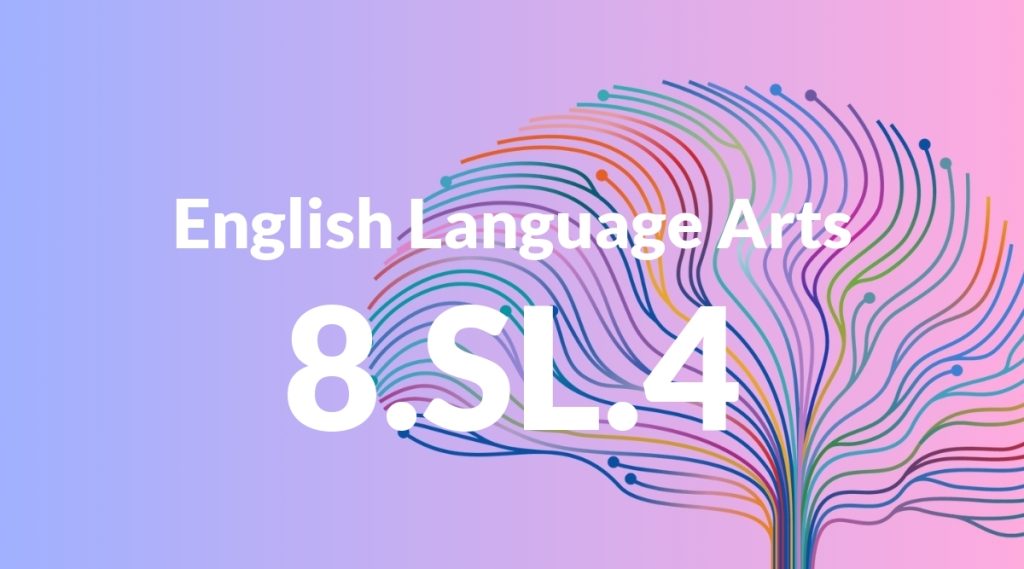Standard: 8.SL.4 – Present claims and findings, emphasizing salient points in a focused, coherent manner with relevant evidence, sound valid reasoning, and well-chosen details; use appropriate eye contact, adequate volume, and clear pronunciation.
Grade level: Grade 8
Subject: English Language Arts
Domain: Speaking & Listening
Teacher Overview
This standard focuses on developing students’ ability to present information clearly and coherently. It emphasizes the importance of using relevant evidence, sound reasoning, and effective communication techniques. Mastery of this standard is crucial for students’ success in both academic and real-world settings. Students should be comfortable organizing their thoughts and have a basic understanding of how to structure an argument. They should also have some experience speaking in front of a group.
After mastering this standard, students will be able to participate in more sophisticated discussions, present persuasive arguments, and collaborate effectively in group settings.
Common Misconception 1
A common misconception is that volume is more important than clarity. Students may think that speaking louder will make their message clearer, but this can lead to shouting and reduce the overall effectiveness of their presentation.
Intervention 1
To address this, incorporate exercises that focus on controlled breathing and diction. Practice speaking at a moderate volume while maintaining clear pronunciation.
Common Misconception 2
Another misconception is that eye contact means staring at one person. This can make the audience uncomfortable and reduce engagement.
Intervention 2
Teach students to scan the room and make brief eye contact with different individuals. This helps to engage the entire audience and makes the presentation more dynamic.
Prerequisite Knowledge
Students should have basic skills in organizing their thoughts, understanding the structure of an argument, and the ability to speak clearly in front of a group.
Subsequent Knowledge
After mastering this standard, students will be able to engage in more complex discussions, present persuasive arguments, and participate effectively in collaborative discussions.
Instructional Activities
- Role-playing different speaking scenarios
- Peer reviews of presentations
- Group discussions on effective communication techniques
- Practicing speeches in front of smaller groups
- Using video recordings to self-assess presentation skills




